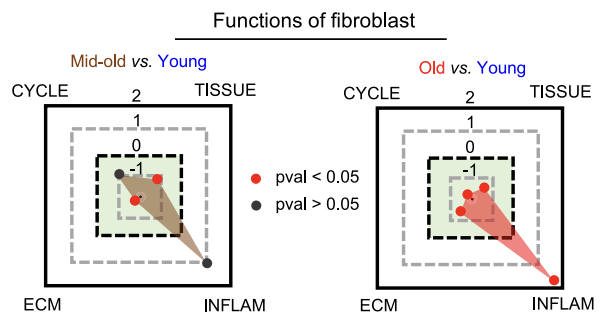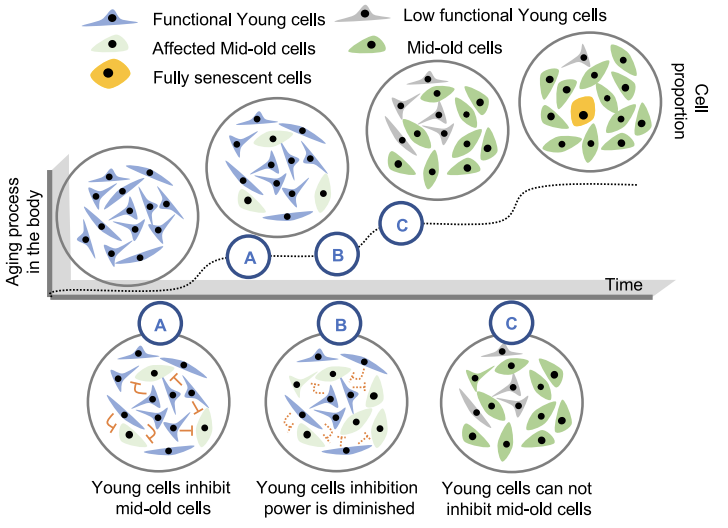Cellular Senescence and Aging
How cellular senescence is associated with aged phenotypes of individuals?
The human body follows a chronological progression from youth to old age and, ultimately, to death. Similarly, cells, the smallest functional units of the body, also undergo a lifecycle from youth to aging. A cell differentiates from a stem cell, replicates repeatedly to perform its specific functions, and eventually enters a state of senescence, characterized by cell cycle arrest. Does this mean that the tissues of elderly individuals are predominantly composed of senescent cells? In fact, this is not the case. The body maintains its functions through an efficient turnover system, generating new cells from stem cells. Additionally, when the immune system functions properly, immune cells effectively eliminate senescent cells from normal tissues. This turnover is particularly rapid in epithelial cells, such as skin keratinocytes or the lining cells of the gastrointestinal tract, which are exposed to significant mechanical stress and external stressors. Their high turnover rate ensures the maintenance of tissue integrity and function despite constant wear and tear. In other words, epithelium might not be the place for senescent cell accumulation. Rather, tissue stroma, which composed of slow replicating mesenchymal cells, might be the place for senescent cells accumulation.
Indeed, our previous studies have shown that the proportion of senescent cells in normal tissues of elderly individuals does not significantly increase compared to those in younger individuals even in the stromal area (Park et al., 2024) (Kim et al., 2023). Given that the elderly often experience both clinical and subclinical dysfunction of their organs, the main question arises: what drives the functional decline observed in the tissues of elderly individuals?
Here, we hypothesize that another cell population, distinct from both young and senescent cells, may contribute to the functional decline of tissues in the elderly. We have termed this population “mid-old cells.” Mid-old cells are characterized by their ability to continue proliferating, albeit with functional limitations. Notably, these cells are frequently observed in fibroblast populations, where they exhibit reduced extracellular matrix synthesis and impaired tissue regeneration.
Our future research aims to uncover the precise relationship between cellular senescence and aging, specifically identifying which systems’ senescence primarily drives the functional decline associated with aging (Park et al., 2024). Investigating the mechanisms by which mid-old cells contribute to functional decline will be another key focus of our future work.




